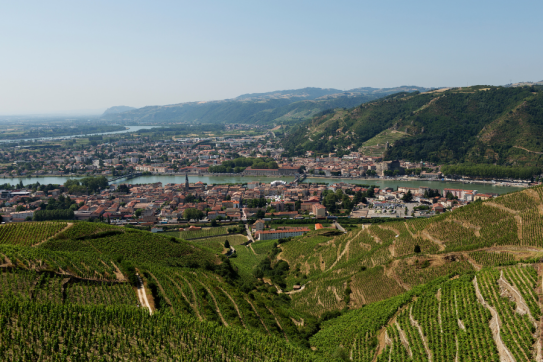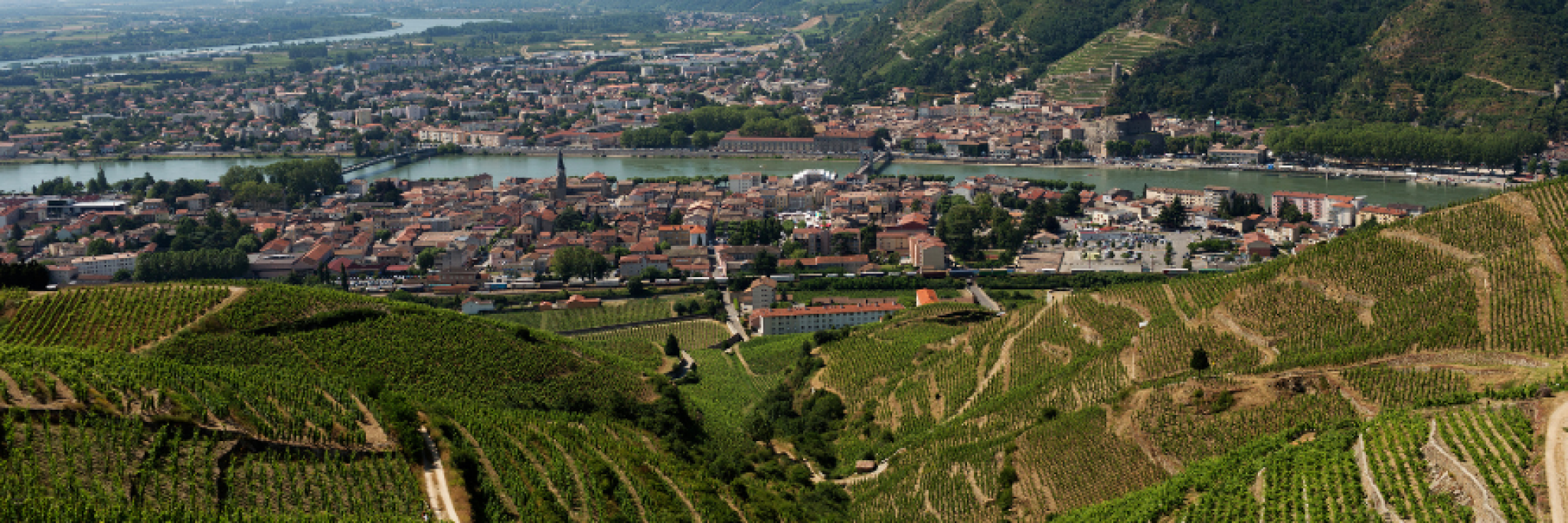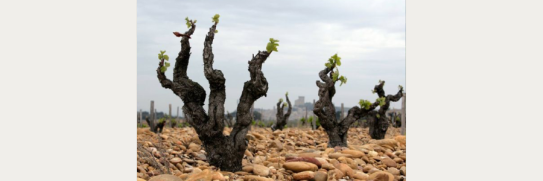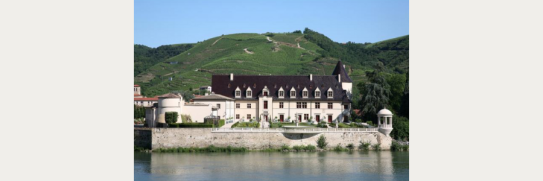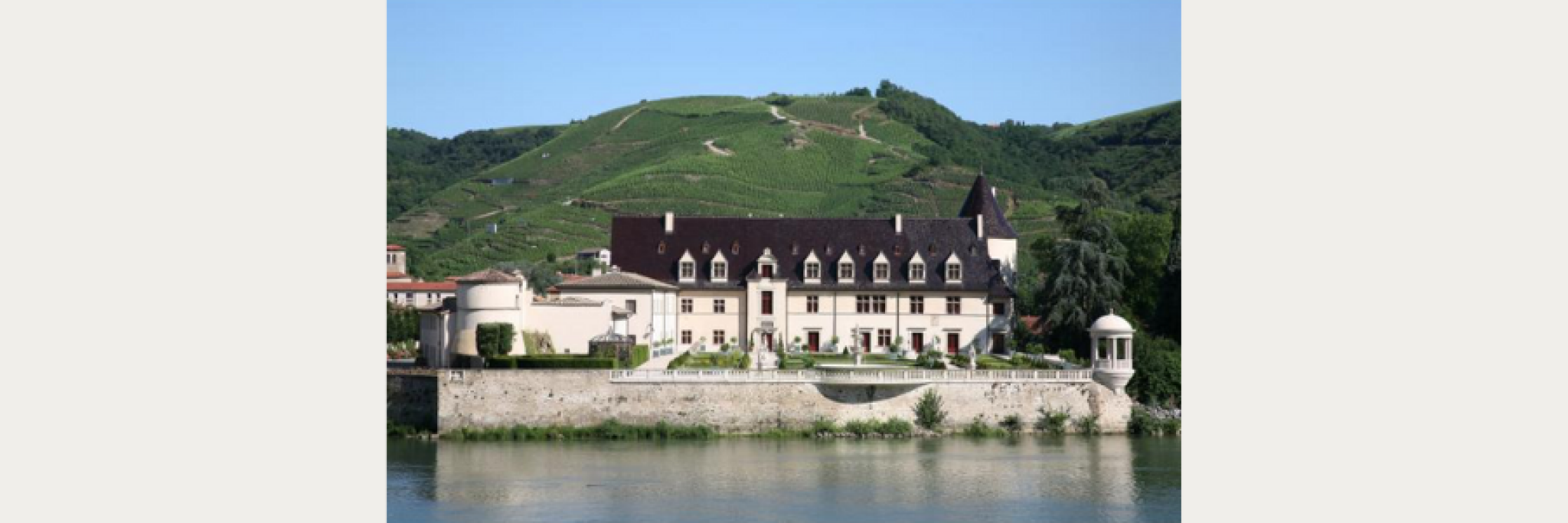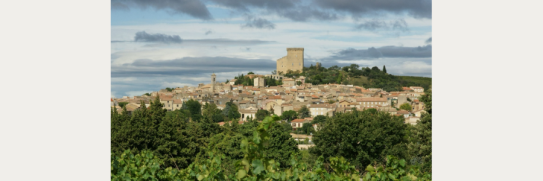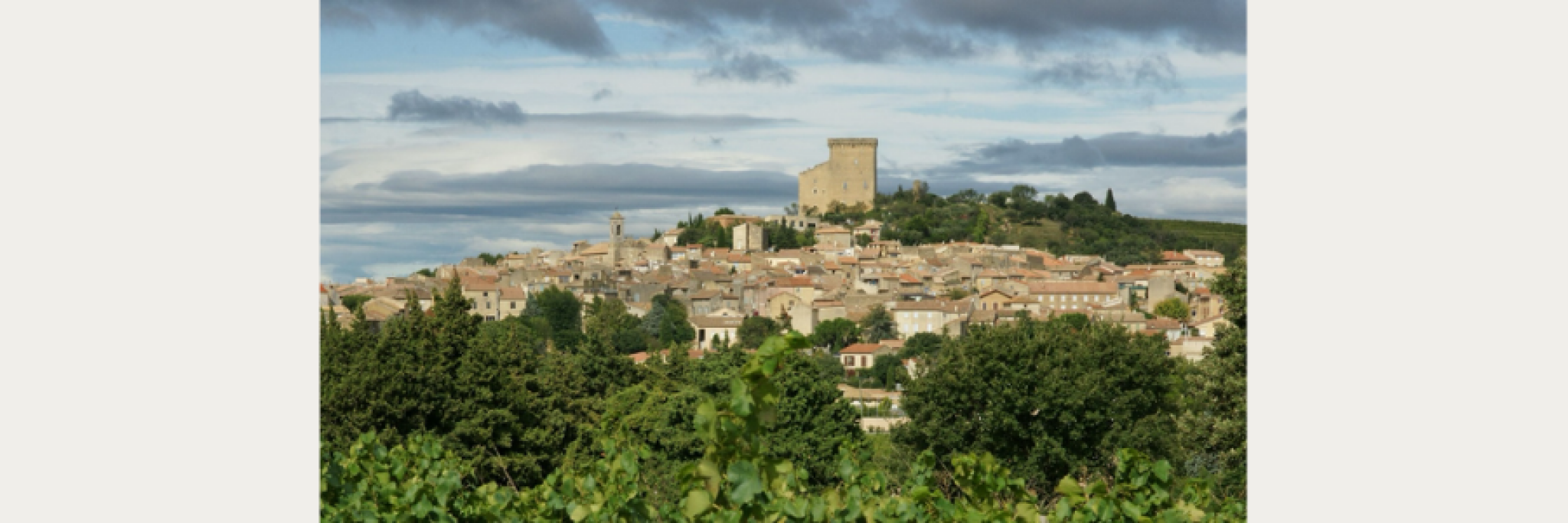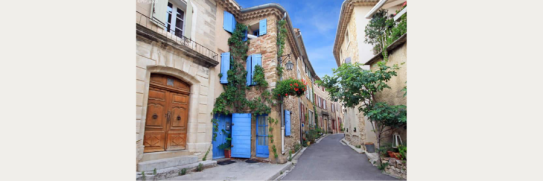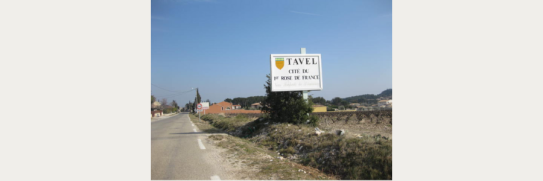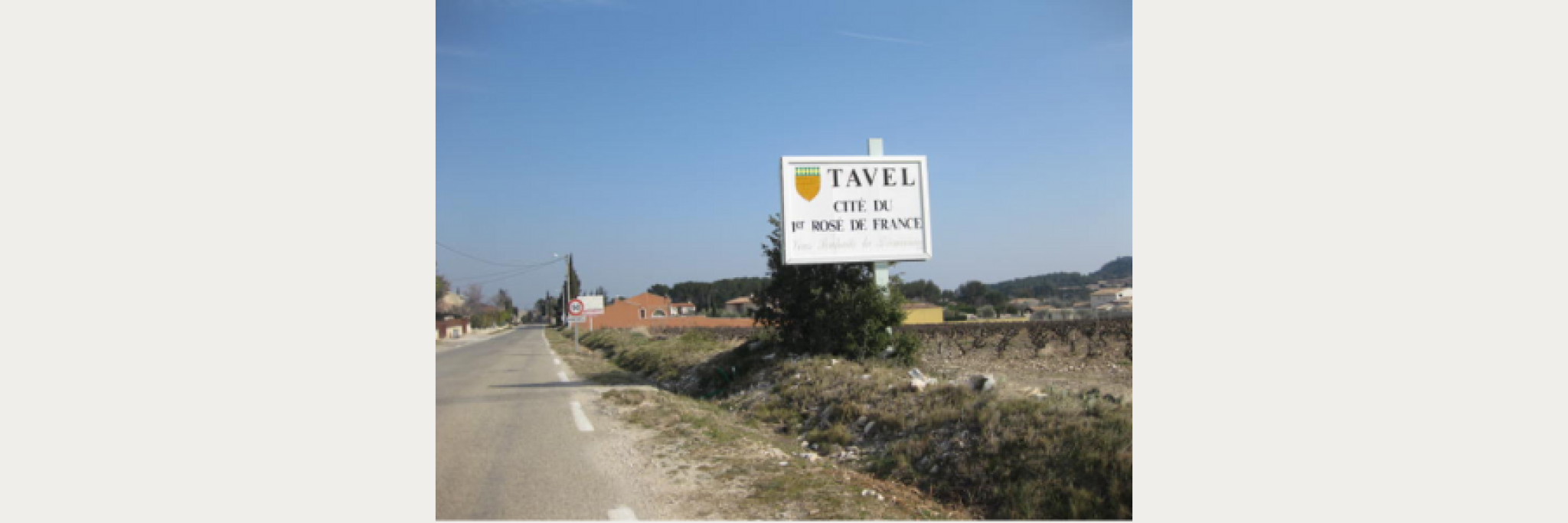The Rhône Valley makes some of the finest wines in the world let alone France; it is commercially a fundamental section of any wine list with Côtes-du-Rhône often leading the way. There is amazing diversity as well as quality and Peter Graham Wines have developed an extensive selection which I will highlight through the blog.
PETER GRAHAM WINES - RHONE VALLEY
The river Rhône starts its life in Switzerland and exists into Mediterranean. It was the original gateway to France for grape varieties brought by the Romans – with plantings existing from 600BC. today, there are 70,000 has under vine and around 5,300 producers – split into two regions (North & South) it is a large production area but dominated by The South.
The South makes, on average, 95% of the total Rhône production and if you were to amalgamate all the main AOC areas in The North, they would only fill about 75% of the area under vine in Châteauneuf-du-Pape – The South’s most famous appellation! The South is significantly hotter and more arid than the North which is more Mediterranean in climate.
The very imagery of the Rhône could be said to stem from the reputation of one AOC – Hermitage, whose total area under vine is only 142 hectares – the same size as a large Château in the Bordeaux. In 1787 US President Thomas Jefferson proclaimed Hermitage to be “The first wine in the world without a single exception”. In 1828, Hermitage commanded higher prices than any other wine in Europe – including Lafitte (sic), Haut-Brion and Chambertin. Paradoxically, there is no classification system (Grand or Premier Crus) in the Rhône – so need to know your producers.
The main soil type is decomposed granite (with some limestone and clay) though the South has greater soil type diversity, captured most famously but the large pudding stones – galets – in Châteauneuf-du-Pape. The soil in the South is more calcareous with alluvial deposits.
Classic old “bush vine” Grenache here at Domaine du Vieux Télégraphe in the La Crau section of Châteauneuf-du-Pape, with the famous galets pudding stones
The main grapes planted in The North are as follows:
All reds must be made from Syrah, although Côte-Rôtie and Hermitage are allowed to add up to 20% Viognier in the blend – an abandoned practice in Hermitage whilst in Côte-Rôtie the average added is 5-8% - some none. Whites are made from Marsanne and Roussanne (either singularly or in a blend) with one exception – Condrieu must be 100% Viognier.
By contrast, the main grapes South are:
Reds are usually a blend led by Grenache – other important black varieties include Syrah, Mourvèdre and Cinsault.Châteauneuf-du-Pape can use up to 13 varieties, but none do apart from odd showmanship cuvées. main Whites are Grenache Blanc, Clairette, Bourboulenc, and Roussanne.
Key Wine Regions
North Rhône
Condrieu
Condrieu – it’s steep! And that decomposed granite soil
A 1940 classification, this tiny area is only half the size of Côte-Rôtie. This includes the AOC of Château Grillet (3.5 ha), which is often mistakenly said to be the smallest AOC in France (that honour rests with la Romanée in the Cote de Nuits – 0.85 ha). It is split into 7 communes on very steep slopes between 150-300 metres in altitude.
In summary, this is one of the world’s rarest white wines and – at its best – simply one of the most intoxicating and hedonistic. So run down did this region become in the mid-20th Century, that is got close to extinction – but not so now. I have never really found out exactly why it became white only, but some producers believe it is due the special soil vein known as “arzelle” which lies in the AOC in the mainly decomposed granite. This artery is made up of fragmented mica, shist as well as granite, with some clay – and the Viognier seem to do especially well here. Certainly, most of the finest wines seem to come from grapes grown on arzelle.
Modern day Condrieu seems to be even richer than ever, with later harvesting, increased use of oak (new barrels) and even some botrytis percentage of grapes included in some blends. These wines are never intended for aging and are best enjoyed with 4 years of release. The key to great Condrieu (Viognier) is that the wines are intensely fruity and perfumed, very full bodied and textural with soft acidity, but never flabby.
Interestingly the Viognier grape is now being widely planted in other areas of the Rhône, including in the Côtes-du-Rhône and the nearby broader IGP area of Collines Rhodaniennes - a classic example of which is the M Chapoutier Viognier La Combe Pilate which is nicely textural and full of the classic apricot stone fruit flavours of Viognier.
https://petergrahamwines.com/p/19-chapoutier-la-combe-pilate-viognier
Côte-Rôtie
Classified in 1940, this incredibly steep, crampon prerequisite, AOC vies with Hermitage as the flagship for the North – and this is down to a large degree to the reputation of one producer – Marcel Guigal – and their “La-Las”. Top wines are plusher and more exuberant than their Hermitage counterparts, but maybe lack the sheer sense of place, minerality and intensity. The Côte-Rôtie is subdivided into two main sections of varying soil types - the Côte Brune ("brown slope") in the north which is darker, with iron-rich and schist soils composition and the Côte Blonde with its paler granite and schist soil. There is much debate as to the style these soils contribute with limited empirical evidence.
Guigal’s Château d’Ampuis - Côte-Rôtie
They are faster maturing than Hermitage and display an opulence which can be very seductive. The “godfather” of the appellation is undoubtedly E Guigal whose top single vineyards (nicknamed the “La-La’s”) are the most sort after of all Côte-Rôtie. This percolates right through the range to the excellent mixed site example Brune et Blonde which sets a benchmark style.
https://petergrahamwines.com/p/17-cote-rotie-brune-et-blonde-e-guigal
Hermitage
Hermitage was long known and regarded as France’s greatest red, and in the early 19th Century was the most expensive wine in all of France. In this period red Hermitage was regularly shipped to Bordeaux to bolster the frailer reds of the time in that region. Less well known the appellation also makes amazing dry, rich, and textural white wines from the Marsanne and Roussanne grapes.
Only about 60% of the size of Côte-Rôtie and classified in 1937 (ironically the day after Crozes) this is the most famous AOC in the Rhône and, for many, where the greatest - and the Rhône’s most long lived - reds and whites are found. Hermitage also has another trick up its sleeve in that it also produces quite exceptional, if rare and very expensive, Vin de Paille – or sweet dessert wines made from straw dried white grapes. The dramatic, steep granite hill also sits at juxtaposition, being across on the other side of the Rhône from all the other main wine producing areas, apart obviously from Crozes Hermitage. The hill is named after the reclusive (ie hermit) crusader Gaspard de Stérimberg who lived allegedly alone on the hill and built a chapel. Today, a reconstructed white version decorates the top of the hill and is an iconic landmark in the region. The hill dominates the rather dull town of Tain, which is also famous for having the world-renowned chocolate factory Valrhona.
Crozes Hermitage
The largest AOC (in terms of vines planted) in the North Rhône – nearly 9 times larger than Hermitage it is - like St. Joseph - a good source of more affordable and occasionally great red wines. Although the region also produces white wine Registered in 1937 it is split into 5 sub regions – maybe the best being Larnage - these wines at best show a character of the north Rhône. The best deliver real vitality and freshness aligned to some staying power.
St. Joseph
The second largest (and most elongated) AOC in the North and an area dedicated to apple orchards and soft fruit production as well as vines. Both red and white wines are produced – all reds from Syrah and whites from Marsanne and Roussanne. It was formally ratified as an AOC in 1956. Along with Crozes Hermitage, it is the source of the most affordable and ubiquitous north Rhône wines. However, an area capable of more than the just workhorse wines – the top examples are fine, All the best vineyards are not unsurprisingly close (if across the river) to Hermitage in districts such as Mauves and Tournon. These are also the steepest sites and with the poorest soil (a lot of St. Joseph is quite flat). Also, like Côte-Rôtie, there is no town or village called St. Joseph. A cracking example is again from E Guigal Vignes de l’Hospice which showcases the North Rhône red style to perfection – blackberry fruit, delicate tannins, medium body and a spicy, savoury edge
https://petergrahamwines.com/p/17-saint-joseph-vignes-de-lhospice-e
Cornas
Was classified in 1938 and considered by some to be the real home of the “black wines” of the Rhône. Somewhat physically detached from the rest of the AOCs the very steep vineyard area is considered to be one of the oldest vine growing areas in France. A sun trap area of the north Rhône – often 5°C warmer than Hermitage on the same day - the best sites are found on the steep hill sides, not the overly fertile valley floors. The region is totally devoted to red wine production and only from Syrah grapes. The result is – what might be termed roasted black fruit character – sometimes rather coarse but always full bodied. The best wines are considered to come from the vineyards behind the (rather dull) village in Reynard and Les Côtes. Soils remain predominantly granite, but here is also a proportion of limestone.
St. Peray
Described by Robert Parker in 1996 as “The Jurassic Park of the Rhône”, this 65ha southerly annex to Cornas has hardly set the pulses racing. It shares one major attribute with Condrieu – it is a white wine only OAC – but this time from Marsanne and Roussanne rather than Viogner. Surprisingly classified before any other Northern Rhône in 1936 it is home to both still and sparkling white wines, although historically outdone by its easterly counterpart Clairette de Die for sparklers, by that the Muscat based examples. To be fair since those days things have moved on and there is increasing interest and investment going on. Recent investment and wines produced from the likes of Domaine du Tunnel have shown the potential of this rather forgotten appellation.
Southern Rhône
Although it shares its name with the Northern part, the Southern Rhône is a complete contrast. Heading south on the motorway from the southernmost part (Valence) of the North Rhône it takes a good hour’s drive before you begin to enter an area which might be termed the Southern Rhône.
Along the way the climate and terrain change markedly to a much warmer and more Mediterranean feel (in fact a sign on the motorway proudly announces this fact). Buildings take on a more burnt terracotta look, and the land flattens out significantly. In addition, the effect of the mighty river Rhône diminishes as the vineyards and the river increasingly part company. And then there is the sheer scale of the viticultural area.
To put this into context, as said, if you were to merge all the appellations of the Northern Rhône into one vineyard land mass, it would easily fit into Châteauneuf-du-Pape alone – and with plenty of space to spare!
The iconic town of Châteauneuf-du-Pape
Peeling off the motorway you quickly enter the amorphous area known as Côtes-du-Rhône, which was formally designated in 1966. Expansive (with over 42,000 hectares of vines) and fragmented, this relatively flat and fertile area could be described as the workhorse area of the Southern Rhône. Such is its sheer size and diversity that focusing on who are the better producers is time well spent, as this is a source of excellent value for money styles. That is not to say that there aren’t better areas of production – there are – and these have been formally identified and defined over the last 40-80 years. The organic Réserve de Fleur epitomises the modern style – Grenache led blend with bright soft red fruits and subtle spiciness.
https://petergrahamwines.com/p/cotes-du-rhone-organic-reserve-de-fleur
As the interest in the Côtes-du-Rhône grew and winemaking improved, certain villages became identified with producing consistently better wines. Over time, such was their reputation; they were formally recognised with their own Appellation. Today the most renowned of these is broadly accepted as Gigondas (AOC 1971).
Gigondas is an attractive and atmospheric large village. The vast majority of Gigondas is red – with a little rosé made. Situated well inland and away from the river, this region is roughly split into 3 sub areas: the large flat plain to the west, where the more robust wines tend to come from; the lower slopes of the needle like Dentelles mountains to the east; and the higher sloped cooler, higher altitude vineyards behind the village. Top producers here can match the quality, price, and style of a top Châteauneuf-du-Pape.
The beautiful and quite sleepy village of Gigondas
A lovely example is the Domaine de Font Sane which shows the step up in terms of concentration and intensity of fruit power and spice from the more generic Côtes-du-Rhône.
https://petergrahamwines.com/p/gigondas-tradition-domaine-de-font-sane
Vacqueyras (1990) can make all colours of wine but is really a red wine area. This is another (geographically close) village of Gigondas, with similar qualities and style. Dominated by the local co-operative there are also several Domaines.
Other top AOCs, former Côtes-du-Rhône Villages:
- Beaumes de Venise (2005) – also famous for producing very good, aromatic, fortified, sweet Muscat wine
- Vinsobres (2006)
- Rasteau (2010) – again making high quality fortified, red, sweet wines as well
- Cairanne (2018)
Within these areas – and from top producers – are some to the finest value for money wines in the whole generic region.
Châteauneuf-du-Pape
This is the most famous of all regions in the south and, at their best, the finest wines produced in the area. But this is not to say that all Châteauneuf-du-Pape is superior because it isn’t. There is a real parallel here with Burgundy in that the key is to sieve through the welter of names to those who are the most consistent and conscientious. This is doubly difficult as there is no hierarchy or formal classification of top vineyards or producers (unlike Burgundy and Bordeaux) to guide the drinker. In summary:
Châteauneuf-du-Pape was the one of the very first French wine appellations; created in 1936 and today there are 320 wine growers. 7,746 acres of vineyards (3,134 hectares) are under vine, which produce on average 14 million bottles each year! (by contrast Hermitage in the North is only 345 acres in size making, on average, 750,000 bottles of wine per year).
Nearly 75% of the vineyards are dedicated to Grenache - by far and away the most important grape of the region. By law there is Red and White Châteauneuf-du-Pape, but Rosé is not allowed. The main white grapes are Roussanne, Grenache Blanc, and Clairette which produce a full bodied and rich style (Viognier is not allowed by the way) – top examples such as Château Beaucastel are sublime.
Back to red Châteauneuf-du-Pape, Grenache is regularly blended with Syrah and Mourvèdre, along with Cinsault on occasions. Yes, it is true that up to 14 grape varieties can be included in Châteauneuf-du- Pape, but most wines are a blend of these “big three”
No one in the region every uses all the varieties in a blend (except for an odd “showcase” example) so although they all exist their presence is slightly mythological. It is also possible to find Châteauneuf-du-Pape made from 100% Grenache - and the most famous (and expensive) of them all - Château Rayas does just that. By contrast another great estate Château de Beaucastel incorporates the highest proportion of Mourvèdre in its blend than any other producer. So, there is no one, single recipe here. The Domaine Chante Cigale example exemplifies the richness and savouriness of a classic Châteauneuf-du-Pape, along with bright red berry fruits and sot spice and liquorice.
https://petergrahamwines.com/p/19-chateau-du-pape-chante-cigale-red
There are several other important areas, offering fine style often a fair price, including:
Lirac
Lirac is a rather sleepy and modest village. This area makes red, rosé, and white. The reds are very much in the Châteauneuf-du-Pape mould (if not quite so full bodied) and the rosés rival Tavel for full bodied richness. This area arguably produces some of the best wines in terms of style and value for money.
Tavel
Classified in 1936, Tavel lies to the south of Lirac - this Appellaton is unique in France in that it is only allowed to make Rosé wine, and there is no lack of confidence in their ability as their village sign proclaims! – Often the fullest bodied, dry, and textural rosé style in all of France, usually with quite a deep rosé colour. These are food rosés which need to be served well chilled.
Other Southern Rhône areas of note – often at excellent value for money - include:
Côtes du Ventoux
One of the lighter (relatively speaking) styles of wine in this region, these drink like a Côtes-du-Rhône
Coteaux du Tricastin
Similar in style to Ventoux – maybe a little weightier on average.
Cotes de Vivarais
Neighbour and stylistic twin of Tricastin
Costières de Nîmes
One of the great debates in the trade is where does the Southern Rhône end and the “South of France” – eg the Languedoc - start? For me Costières de Nîmes is in the South Rhône and although it has some Languedoc qualities the main style is positively Côtes-du-Rhône.
Sweet, Fortified Wines of Southern Rhône
This district is also rightly famous for several outstanding sweet wines, called “Vin Doux Naturel” (or VDN). These are gently fortified and either white (from the Muscat grape) or red (from Grenache). They are not too alcoholic and not too sweet and can be “intoxicating” with their heady aromas and bold fruity flavours. Top examples include:
Rasteau VDN
Technically VDNs can be red, white, or rosé here, but the main production is red from Grenache.
The production of fortified wine was introduced in 1934 and in 1944 the Rasteau AOC for VDN wines was created, with effect from the 1943 vintage. The method of production is the same as for Port - by that the high strength spirit added during fermentation to arrest the process (killing the yeast) and leave natural grape sugar in the wine.
Beaumes de Venise VDN
Although a standalone (AOC) village for red Côtes-du-Rhône, the area is probably more renowned for its white VDN from the Muscat grape. Golden in colour with a lovely, perfumed, exotic nose these wines have a hedonistic style.
Food Matching
Reds
Any red meat dishes, casseroles, game – even a mild curry. Also, char grilled and roasted vegetable dishes and ratatouille. Could also work with wild mushroom risotto
Rosés
Summer salads, pan fried oily fish and shellfish, crudités, salade niçoise
Whites
Fish in general (even with a richer sauce), pork, chicken and most vegetable dishes
Sweet VDNs
For Muscat - cakes (there is a traditional Muscat Beaumes de Venise cake made in the region), fresh fruit-based desserts (including tropical fruits) with meringue – or just a nice drink on its own. For Grenache this is one of the few wines in the world which genuinely works well with chocolate or, again, drink on its own.

